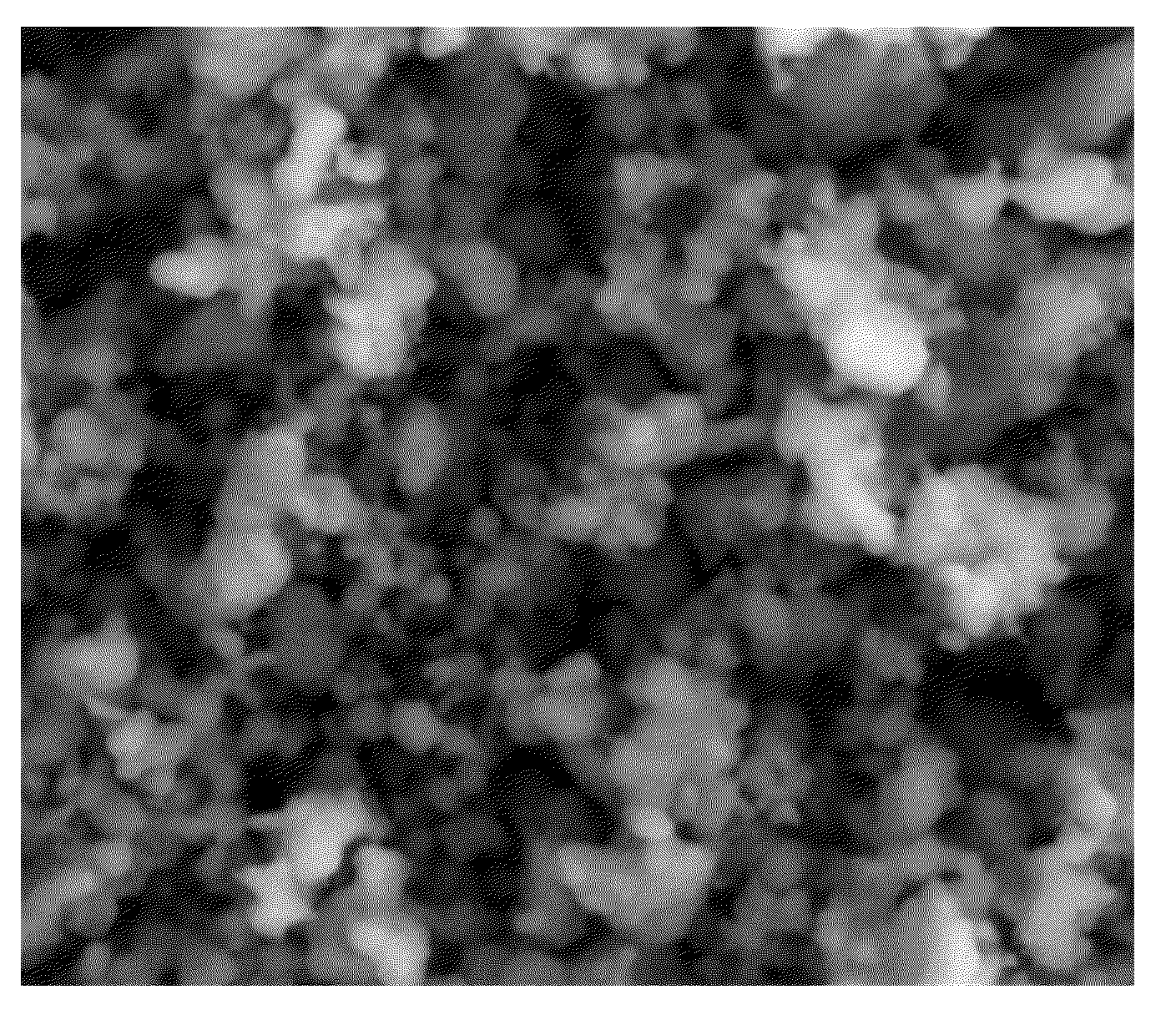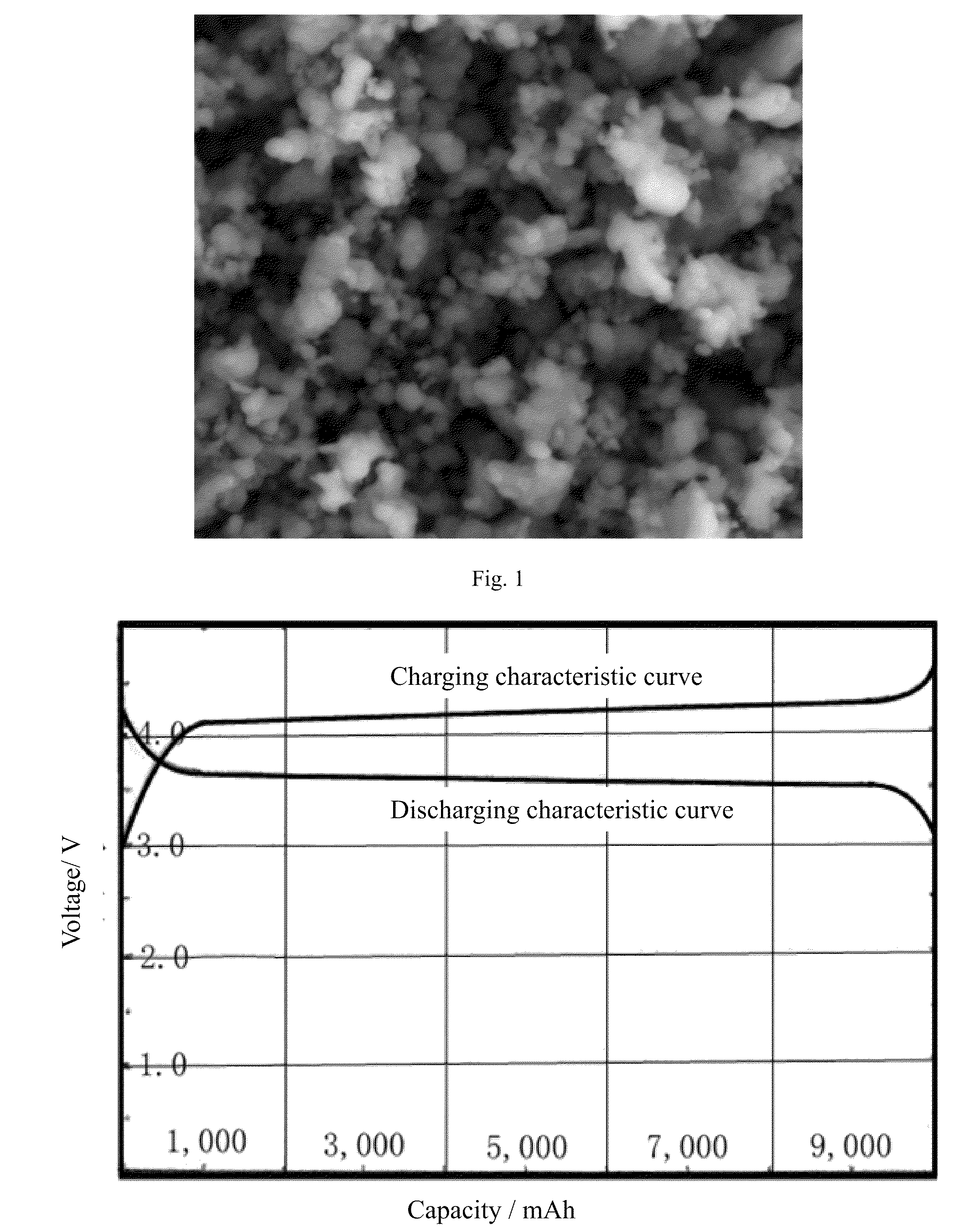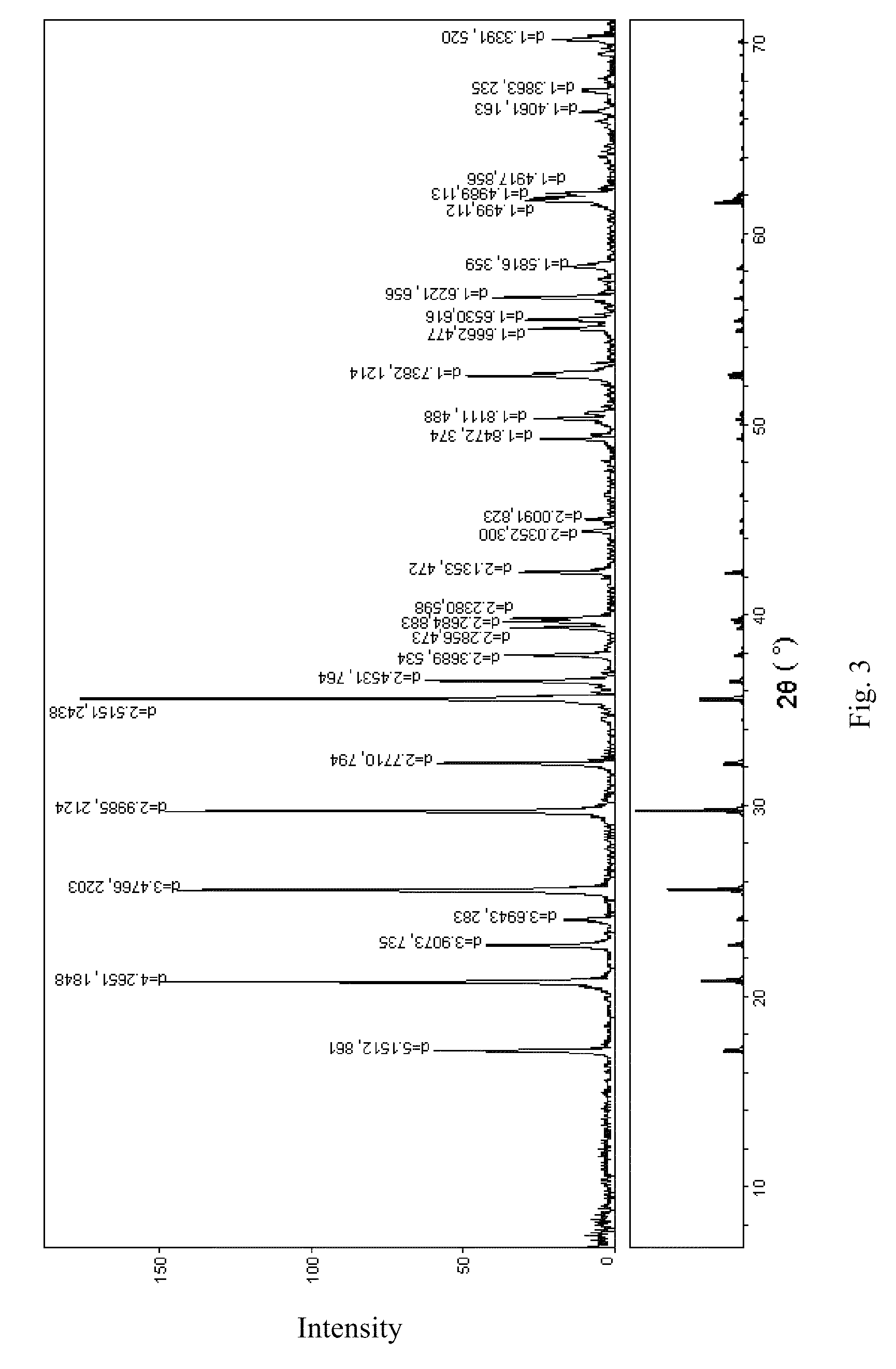Nano-Positive Electrode Material of Lithium Cell and Method for Preparation thereof
a lithium cell and electrode material technology, applied in the direction of cell components, conductors, electrochemical generators, etc., can solve the problems of high manufacturing cost, low safety, and large release of hea
- Summary
- Abstract
- Description
- Claims
- Application Information
AI Technical Summary
Benefits of technology
Problems solved by technology
Method used
Image
Examples
embodiment 1
[0024]In the first step, lithium dihydrogen orthophosphate 1000 g (9.62 mole), ferrous oxalate 1410 g (9.80 mole), glucose 120.5 g (0.67 mole), conductive doping agent of magnesium oxide 17 g (0.42 mole), as well as voltage-boosting doping agent of manganese phosphate 50 g (0.20 mole), cobalt carbonate 27 g (0.23 mole) and titanic acid 25 g (0.26 mole) are placed into ball mill to be milled and stirred for 2 hours into powder.
[0025]In the second step, the powder obtained from the first step is pellet-formed, after which it is put in aluminum oxide ceramic crucible, then isothermally sintered for 3 hours after heating up to 200˜300° C. in a nitrogen furnace.
[0026]In the third step, after cooling to room temperature, the resulting material obtained from the second step is taken out, milled into powder, and mixed homogeneously
[0027]In the fourth step, the powder obtained from the third step is pellet-formed, then it is isothermally sintered for 18˜20 hours after heating up to 500˜600° ...
embodiment 2
[0031]In the first step, lithium dihydrogen orthophosphate 1000 g (9.62 mole), ferrous oxalate 1400 g (9.73 mole), glucose 120 g (0.67 mole), conductive doping agent of boric acid 20 g (0.32 mole), calcium phosphate 60 g (0.19 mole) and aluminum hydroxide 35 g (0.45 mole), as well as voltage-boosting doping agent of copper sulfide 30 g (0.31 mole) are placed into ZrO ball mill to be milled and stirred for 2˜3 hours into powder.
[0032]In the second step, the powder obtained from the first step is pellet-formed, then it is placed into a aluminum oxide ceramic crucible and isothermally sintered for 1.5˜2.5 hours after heating up to 300˜400° C. in a nitrogen furnace.
[0033]In the third step, after cooling to room temperature, the resulting material obtained from the second step is taken out, milled into powder and mixed homogeneously.
[0034]In the fourth step, the powder obtained from the third step is pellet-formed, then it is isothermally sintered in a nitrogen converter for 15˜16 hours ...
embodiment 3
[0038]In the first step, lithium dihydrogen orthophosphate 1000 g (9.62 mole), ferrous oxalate 1400 g (9.73 mole), glucose 120 g (0.67 mole), conductive doping agent of meta-titanic acid 29 g (0.30 mole) and silicon dioxide 23 g (0.38 mole), voltage-boosting doping agent of basic nickel carbonate 70 g (0.15 mole) and molybdenum oxide 50 g (0.35 mole) are placed into ZrO ball mill to be milled and stirred for 2˜3 hours into powder.
[0039]In the second step, the powder obtained from the first step is pellet-formed, then it is placed into a aluminum oxide ceramic crucible and isothermally sintered for 1.5˜2.5 hours after heating up to 200˜300° C. in a nitrogen furnace.
[0040]In the third step, after cooling to room temperature, the resulting material obtained from the second step is taken out, milled into powder and mixed homogeneously.
[0041]In the fourth step, the powder obtained from the third step is pellet-formed, then it is isothermally sintered for 16˜17 hours after heating up to 6...
PUM
 Login to View More
Login to View More Abstract
Description
Claims
Application Information
 Login to View More
Login to View More - R&D
- Intellectual Property
- Life Sciences
- Materials
- Tech Scout
- Unparalleled Data Quality
- Higher Quality Content
- 60% Fewer Hallucinations
Browse by: Latest US Patents, China's latest patents, Technical Efficacy Thesaurus, Application Domain, Technology Topic, Popular Technical Reports.
© 2025 PatSnap. All rights reserved.Legal|Privacy policy|Modern Slavery Act Transparency Statement|Sitemap|About US| Contact US: help@patsnap.com



